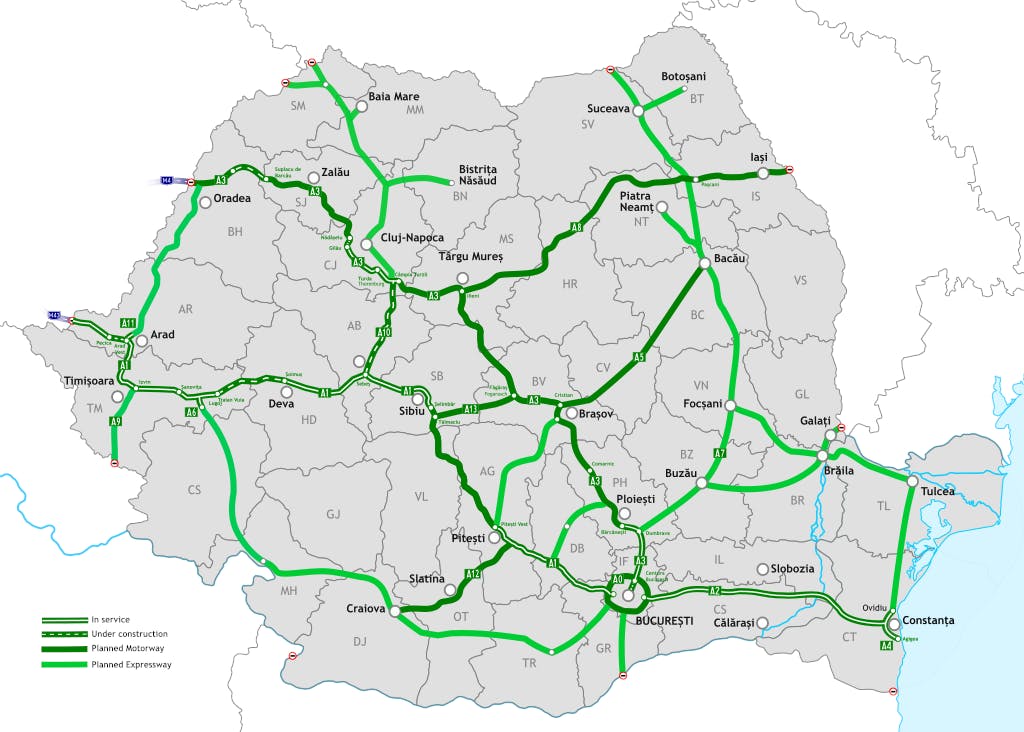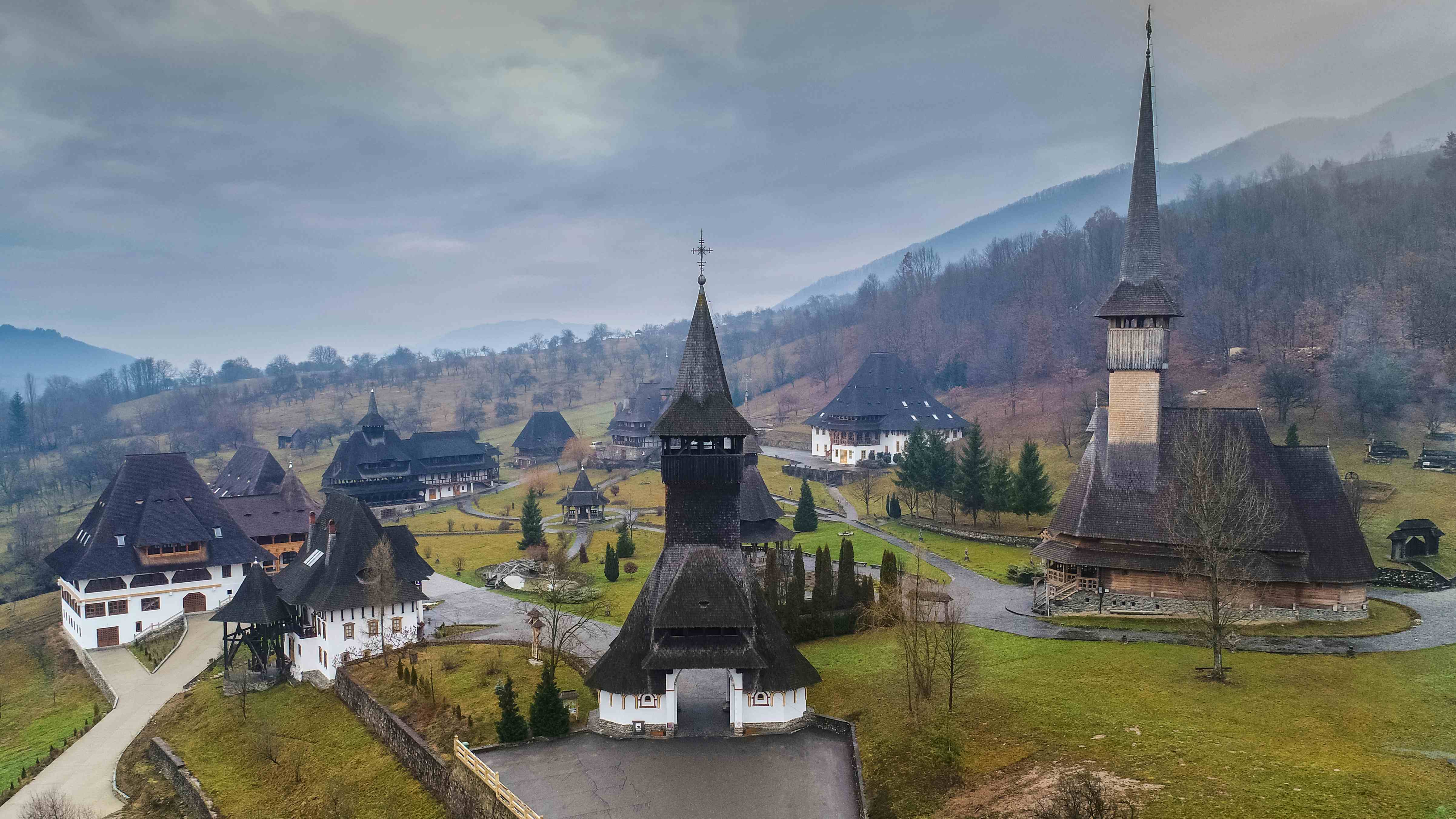Travelling to Romania by car
It is possible to travel to Romania by car, but there are a few things you must take into account. You must have valid insurance for the car, e.g. a green card. You must also have a valid driving license and the car must be in a good condition. If you are traveling to Romania from a country other than Romania, you must also have a valid ID with you, e.g. a passport or ID card.
Paying toll charges in Romania
Yes, you must pay toll charges in Romania for using certain roads and tunnels. The toll charges can be paid in cash or with a credit card at the toll gates, or via an electronic system where you have to install a special on-board unit (OBU) in your car.
There are various types of toll roads in Romania, such as motorways and national roads. This price for using these roads varies depending on the distance you travel and the type of road you use. There are also discounts for frequent users and holders of a Romanian vignette. You can simply order this online on our website.
Travelling to Romania by car during corona
During the corona crisis, extra measures are in force to limit the spread of the virus. If you want to travel to Romania by car, it is important to observe these measures.
Romania has opened its borders to traffic, but there are restrictions for travelers from certain countries. So always check the current rules for traveling to Romania before you travel.
There may also be checks at the border crossings, such as temperature screenings and mandatory quarantines. Keep this in mind when planning your trip.
It is also wise to adhere to local health regulations, such as wearing a face mask in public areas and maintaining social distancing.
Please note that certain facilities, such as hotels, restaurants, and attractions, may be temporarily closed or may operate with restrictions. So plan your trip well and make sure you have enough supplies, in case you come to an area where there are few facilities.
Corona regulations for travellers by car
In Romania, various corona measures are in force for car travellers. These measures may change depending on the situation of the virus in the country. Here are a number of measures that are currently in force or were recently in force:
- Temperature screenings: Temperature screenings can take place at border crossings and in some areas. If you have an elevated temperature, you may be refused further travel or placed in quarantine.
- Quarantine: Travelers from certain countries may be required to self-quarantine upon arrival in Romania. This applies, for example, to travellers from countries with a high number of infections. The Netherlands is not a high-risk country.
- Face masks: It is required to wear a face mask in public areas, such as buses, trams, trains and shops.
- Social distancing: It is required to maintain social distancing of at least 1.5 meters in public areas.
- Restrictions in certain areas: There could be restrictions for travelling to certain areas in Romania, e.g. cities or regions with a high number of infections.
Are there border checks in Romania?
There are strict border checks in Romania. The country is not part of the Schengen area. That is why there are still physical border checks to this day.
Best routes to drive to Romania by car
You can take various routes when you are travelling to Romania by car. The best route depends on your personal preference and the time you have available. Below you will find a few popular routes starting from the Netherlands.
- Route 1: Through Germany, Austria, Hungary and Romania. This is the quickest route and the distance is about 1600 km. This route is mainly via motorways and is easily accessible.
- Route 2: Through Germany, Czech Republic, Slovakia, Hungary and Romania. This is an alternative to route 1 and the distance is approximately 1800 km. This route is also mainly via motorways and is easily accessible.
- Route 3: Through Germany, Poland, Slovakia, Hungary and Romania. This route is slightly longer than the first two routes, with a distance of about 2000 km. This route is mainly via motorways and is also easily accessible.
Which route do you take through Romania?
The best route depends on your personal preference, the time you have available and the places you want to visit. Below you will find a few popular routes:
- Route 1: From the border with Hungary to Bucharest. This is the quickest route and is mainly via the A1 motorway. From Bucharest you can then drive to other parts of Romania.
- Route 2: From the border with Hungary to Bucharest, then on to Transylvania. Transylvania is a historical region in Romania, known for its beautiful castles and mountainous landscape. This route is mainly via the A1 motorway and the DN1 national road.
- Route 3: From the border with Hungary to Bucharest, then on to the Carpathians. The Carpathians are a mountainous region in Romania, known for its beautiful nature and ski resorts. This route is mainly via the A1 motorway and the DN1 national road.
Travelling to Romania by electric car
At the moment, according to the latest available data, there are about 1,300 charging points for electric cars in Romania, with the greatest concentration in the major cities such as Bucharest, Cluj-Napoca, Timisoara and Sibiu.
Romania currently has a limited number of charging points for electric cars. Although efforts are being made to increase the number of charging points, it is still relatively low compared to some other European countries.
Mandatory to take with you in the car
There are a number of things that you must take with you in the car when you drive in Romania:
- Valid driving license: You must have a valid driving license with you when you drive in Romania.
- Identification: You must have a valid ID with you, e.g. a passport or ID card.
- Insurance: You must have valid insurance for the car, e.g. a green card.
- Lighting: You must have lighting with you for the car, e.g. a first-aid kit, reflective vests and a safety vest for the driver.
- Reflective Triangle: You must have this with you and be able to place it when your car is stationary on the road.
Recommended
- Tool box: it is recommended to have a toolbox with you with basic tools, e.g. pliers, a flashlight and a wheel wrench.
- First aid kit: It is recommended to have a first aid kit with you in case unexpected situations arise.
Refuelling your car in Romania
There are many petrol stations in the country, with the greatest concentration in the larger cities and along the motorways. Most petrol stations are open 24 hours a day and carry the most common types of fuel, such as petrol, diesel and LPG.
Most petrol stations in Romania only accept cash or credit/debit cards with chip and pin. It is therefore recommended to have enough cash or a credit card with chip and pin with you.
Fuel prices in Romania
Below you will find an overview of the average prices for the various types of fuel in Romania:
Petrol: The average price for a litre of petrol (Euro95) is approximately €1.30 - €1.50.
Diesel: The average price for a litre of diesel is approximately €1.20 - €1.40
LPG: The average price of a litre of LPG is approximately €0.70 - €0.90
The petrol price depends of course on the region, seasons, international oil prices and exchange rates.
Important traffic rules in Romania
The traffic rules in Romania may vary from those in the Netherlands, so it is important to be aware of these differences when driving in Romania. Below you will find some important traffic rules in Romania:
- Maximum speed: The maximum speed on motorways is 130 km/h, on normal roads 90 km/h, within built-up areas 50 km/h.
- Driving side: In Romania they drive on the right side of the road.
- Alcohol consumption: It is forbidden to drive under the influence of alcohol. The maximum permitted blood alcohol level is 0.3 mg/ml
- Seatbelt requirement: Drivers and passengers must wear a seatbelt.
- Making phone calls: It is forbidden to make phone calls while driving, unless you use a hands-free system.
- Children: Children under the age of 12 or less than 150 cm must be seated in a child seat.
- Lighting: It is mandatory to drive with the lights on when visibility is poor.
Road map Romania- toll roads

NJ Vignette B.V. is an intermediary and applies for the vignette on your behalf and in your name. NJ Vignette B.V. charges a commission for this.
An agreement is concluded between you and the official authority of the relevant country that issues the vignette, with regard to the vignette requirement.
All prices on our website are including vat.

